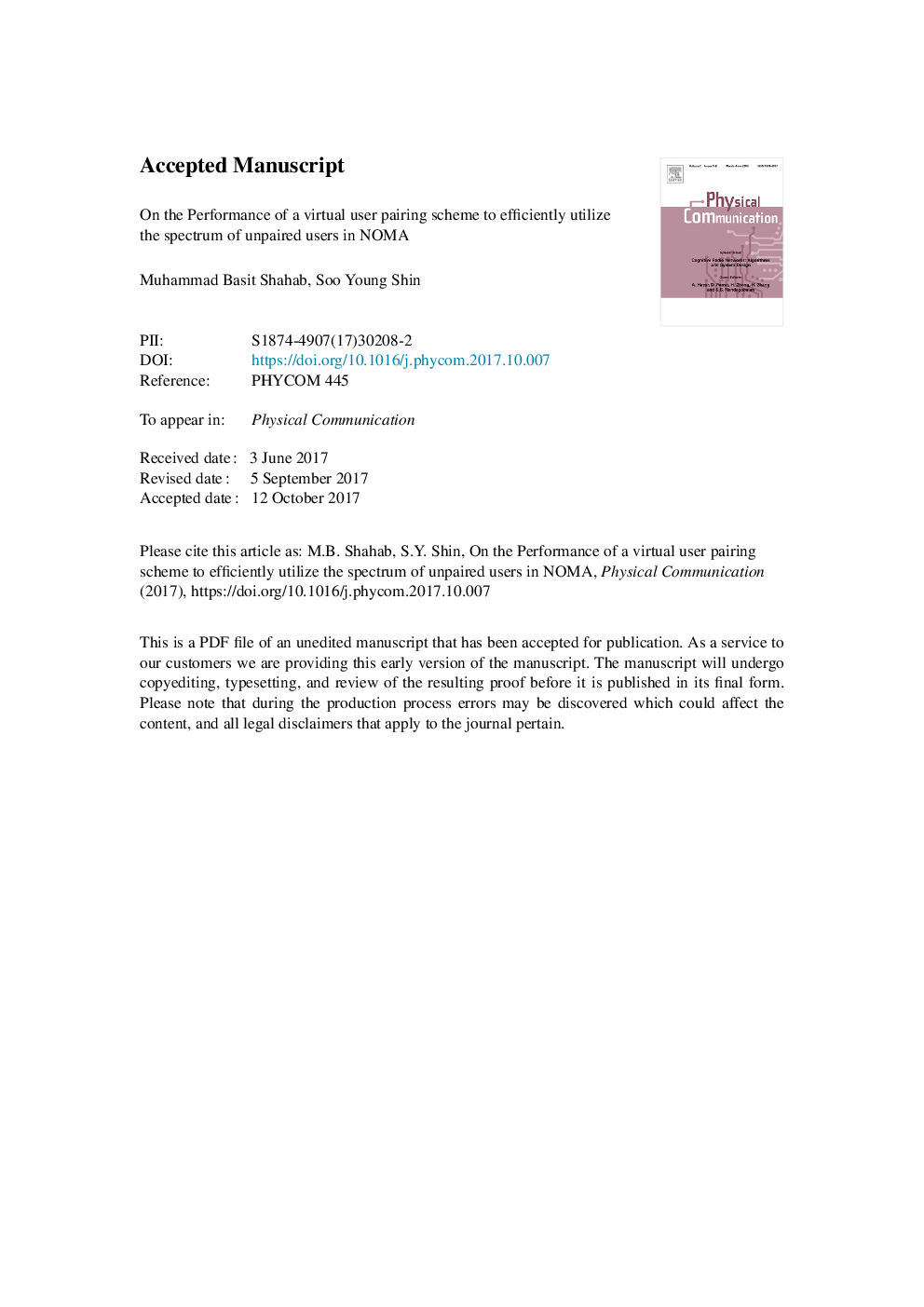| Article ID | Journal | Published Year | Pages | File Type |
|---|---|---|---|---|
| 6889305 | Physical Communication | 2017 | 34 Pages |
Abstract
This paper evaluates the performance of a virtual user pairing scheme that efficiently utilizes the spectrum of unpaired users in non-orthogonal multiple access (NOMA), termed as VP-NOMA. The scheme aims at utilizing the frequency bands of those users which remain unpaired due to the non-uniform distribution of users in a cellular area. We consider a case where the cell edge users are more than the cell center users, so that complete one-to-one correspondence does not exist between all cell center and cell edge users to be accommodated/paired using conventional NOMA (C-NOMA) user pairing. Thus, some cell edge users remain unpaired, and are served using conventional multiple access (OMA) schemes. In such scenario, VP-NOMA pairs a single cell center user with two or more clustered (closely located) cell edge users over non-overlapping frequency bands, thus enabling the cell center user to efficiently use the frequency bands of these previously unpaired cell edge users. Performance of VP-NOMA in terms of ergodic sum capacity (ESC), outage probability (OP), and outage sum capacity (OSC), is analyzed through comprehensive mathematical derivations and simulations for a generalized system model. Moreover, the mathematical analysis is validated through close concordance between analytical and simulation results of ESC, OP, and OSC.
Related Topics
Physical Sciences and Engineering
Computer Science
Computer Networks and Communications
Authors
Muhammad Basit Shahab, Soo Young Shin,
